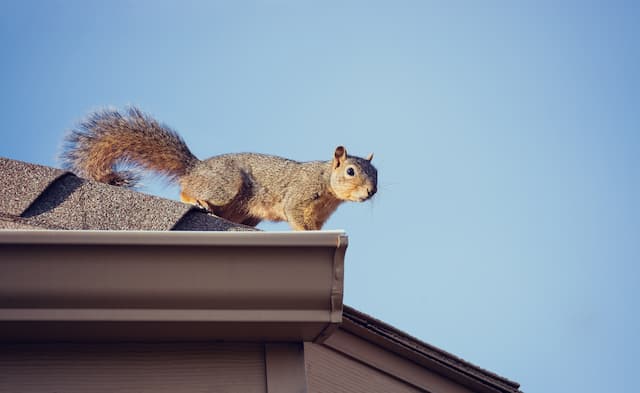Squirrels have emerged as both attractive residents and persistent intruders in the intricate tapestry of nature’s creatures coexisting alongside human habitats. The ability of rodents to gnaw through plastic attic roof vents is a pressing concern for homeowners seeking to protect their dwellings. Unfortunately, the answer is an unequivocal yes. Squirrels are more than capable of chewing through plastic barriers, posing a significant threat to the integrity of your attic and the comfort of your living space due to their resourcefulness and tenacity.
Squirrels’ Unwavering Determination
Squirrels are adept chewers, with teeth that are well-adapted for ripping through a variety of materials, including plastic. These determined rodents frequently use their gnawing abilities to gain access to concealed refuges, such as attics, in order to escape harsh weather and predators. Despite their apparently sturdy construction, squirrels are persistent in their attempts to breach the defences of plastic attic roof vents.
Weaknesses of Plastic Roof Vents
Due to certain vulnerabilities, plastic roof ducts, which are commonly used for ventilation purposes, can become enticing targets for squirrels. Exposure to the elements and temperature fluctuations can degrade plastic over time, making it more susceptible to squirrel chewing. In addition, the design of plastic vents may incorporate seams or edges that provide leverage for rodents to initiate their attack.
The Repercussions of Squirrel Damage
The ramifications of squirrels effectively gnawing through plastic attic roof vents are complex and potentially expensive. Once a squirrel obtains access to your attic, it can cause extensive damage to insulation, wiring, and stored items. The delicate equilibrium of your home’s temperature regulation can be disrupted, resulting in decreased energy efficiency and higher utility bills. In addition, squirrel droppings and urine can introduce unhygienic conditions, endangering the health of residents.
Comprehensive Approach to Preventive Measures
- Damage caused by squirrels to plastic roof vents requires a multifaceted approach that incorporates vigilance and prevention:
- Conduct routine inspections of your attic and roof, looking for signs of squirrel activity such as gnaw marks and nesting materials.
- Consider upgrading to metal roof vents, which provide increased durability and resistance to squirrel chewing.
- Install mesh screens over plastic vents to create a physical barrier that prevents rodents from entering susceptible areas.
- Reduce Squirrel Access to Vents by Pruning Trees: Prune tree branches that provide squirrels with easy access to your roof, thereby reducing the squirrels’ ability to reach the vents.
- Engage the services of wildlife professionals to evaluate your property, provide customized recommendations, and implement effective prevention measures.
In conclusion, whether squirrels can gnaw through plastic attic roof vents is not a matter of conjecture but a sobering fact. Due to their innate ability to chew through plastic and their determination to locate shelter, it is essential to take preventative measures to safeguard your home. You can fortify your attic against squirrel invasion by employing a comprehensive prevention strategy, which includes regular inspections, material upgrades, and mesh barriers. In order to protect their dwellings from these nimble and resourceful animals, homeowners must ultimately be proactive and resourceful.
Contact us for more information about our Humane squirrel removal services in Oshawa.
